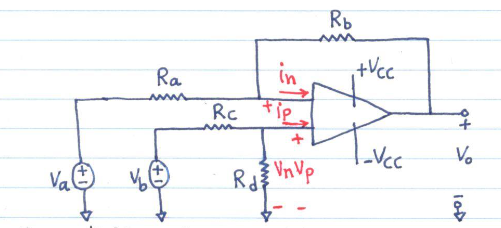Op-Amp
Op-Amps
Operational Amplifiers
Can be configured to do different operations such as: amplification, subtraction, addition, differentiation, integration.

Voltages are considered voltage rises.
All current flows into the Op-Amp.
The output voltage
Op amps have very high input impedance, but low output impedance
There are different regions of operation of an Op-Amp:
- Negative Saturation: This occurs when
is less than - Linear Region: This occurs when
is in between and - Positive saturation: When
is greater than

There are some assumptions we make with Op-Amps:
1. Voltage Constraint: We assume that
2. Current Constraint: We assume that
Gain
Inverting Op Amp

For inverting Op-Amp, Gain = A
Non-Inverting Op Amp

For a non inverting Op Amp your gain = A

Buffer Op-Amp or Voltage Follower Op-Amp

The voltage follower Op-Amp does not amplify the signal. The Gain of voltage follower op-amp is always 1.
Summing Op-Amp

In this case, we still use the equation
We can then use the equation
Therefore using the example above,
Difference Amplifier

Use Voltage Divider to find
Write Kirchoff's Voltage Law equation at the inverting input terminal.